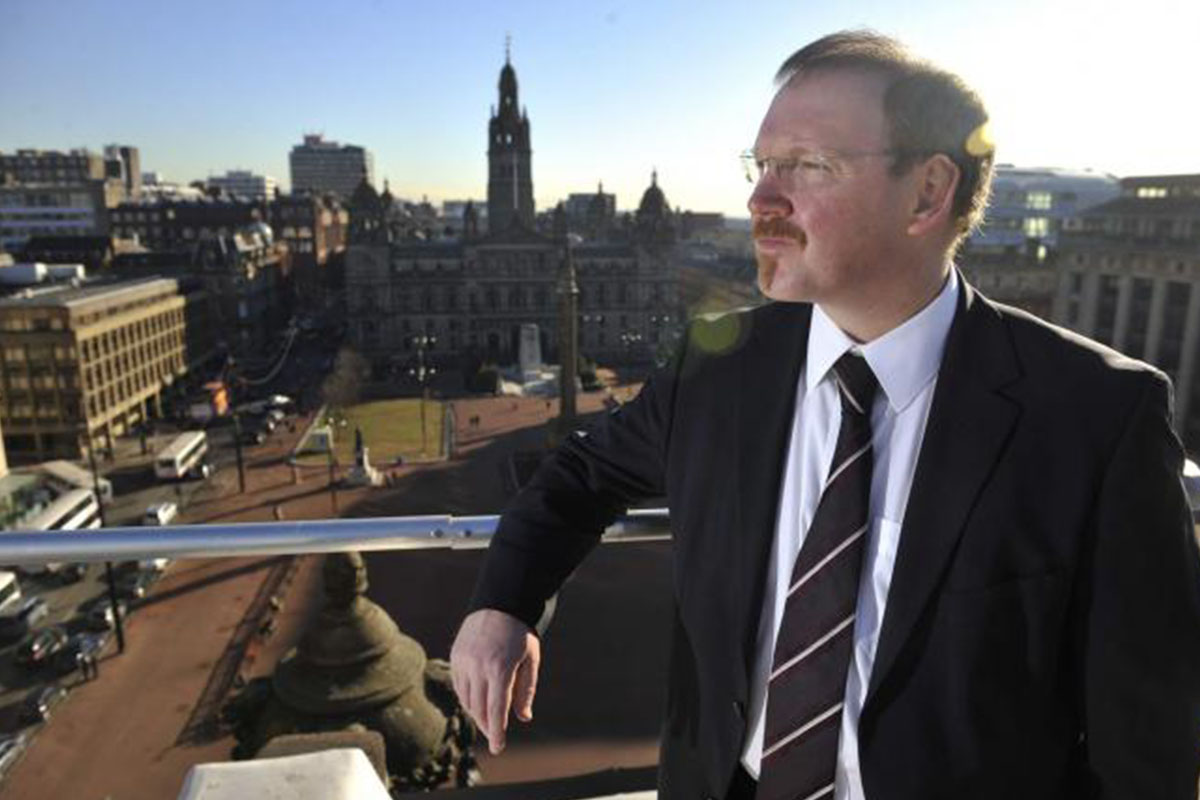
06 Apr 2022
By Stuart Patrick, Chief Executive of Glasgow Chamber of Commerce
Last week the Scottish Government confirmed a near £2m injection of funding into Glasgow’s city centre – a welcomed resource for the city. The money must help improve the centre’s look and feel to encourage Glaswegians back into their city and begin delivering the repurposing plans that have been developed over 16 months by Glasgow’s City Centre Taskforce. That the centre needs assistance to recover from two years of pandemic policy damage is hard to deny as anyone walking the length of Sauchiehall Street will sadly know. The visitor experience has been degraded by empty units, boarded windows and an upsurge in anti-social behaviour.
Specifically, the cash will help to reduce the costs involved in allowing hospitality businesses keep their outdoor areas operating, find short-term options for bringing fresh life into those empty shops, expand deep cleaning of the city streets and tackle the endless supply of graffiti. Better policing and improved transport connections are also on the list and the money will be used to support plans for the city’s style mile. That both Sauchiehall Street and Argyle Street need to diversify from mainly retail into a wider mix of uses should now be uncontroversial and the funding will help the Council design the masterplans to guide that change. The money will help but it can only be the beginning of the reshaping investment needed, most of which will come from business.
While the Centre for Cities’ research using mobile phone data shows Glasgow is slowly and painfully grappling its way back to pre-pandemic levels, the recovery is unbalanced. The hospitality industry is bouncing back more successfully than retail. Weekends and the night-time economy are growing much faster than weekdays. Less people are returning to their offices than is comfortable, although there has been no exodus of companies even when lease breaks have occurred. We cannot yet tell how extensive hybrid working will be but those lease break decisions suggest daily commuting footfall may drop anywhere between 10 and 25%.
With confirmation of the Scottish Government’s funding also came the final report from the national City Centre Recovery Taskforce. This is a more refreshing read than either the National Strategy for Economic Transformation or the government’s recent Retail Strategy. Perhaps because it is grounded in the lived experiences of the local authority leaders, it is mercifully short of the usual lecturing to business on the Scottish Government’s aspirations for fair work or net zero.
There is a great deal to agree with in the report’s priorities. The role of city centres as productive and sustainable economic engines is powerfully reinforced, while the changing nature of retail and new daily working patterns are properly described, and there are no knee jerk assumptions that the future lies mainly in new residents. New homes will be part of the answer but new cultural facilities, shared workspaces, innovation districts and the recovery of assets like the Scottish Events Campus are just as important. There is a helpful acceptance that clarity on the government’s return to work message is also significant. A common theme though is the search for measures to accelerate the re-use of vacant sites and empty buildings.
In Glasgow’s case, the challenges are two-fold; new options for those empty retail units but also the re-use of older office space in the upper floors of the glorious Victorian buildings that make up our traditional central business district. There is much less of a problem encouraging investment in the development of vacant sites such as the new offices for Virgin Money at 177 Bothwell Street or JP Morgan’s demolition and rebuild on Argyle Street or for Moda Living on the site of the former Strathclyde Police headquarters. The big challenge is the conversion into housing of those remarkable heritage buildings where the sums simply don’t add up. The report does make some early proposals but more is needed on the detailed incentives that will help close the investment funding gap.
This article was first published in The Herald on Wednesday 6 April 2022